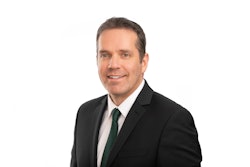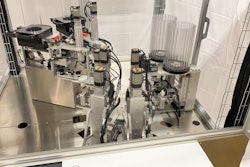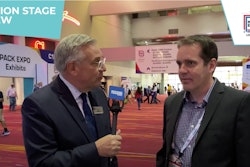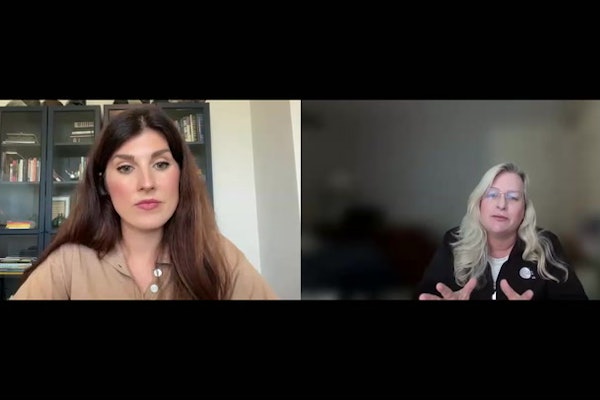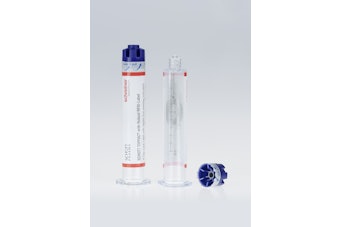Automation World's David Miller, ProFood World's Joyce Fassl, Healthcare Packaging's Keren Sookne and Packaging World's Matt Reynolds discuss some of the new technologies and trends found on the show floor at PACK EXPO Las Vegas. Among them are widespread automation, cobots, cannabis packaging, recyclable blister packs and more.
To subscribe, rate, review and find more unPACKED podcast episodes, visit pmmi.org/podcast or find us on Apple podcasts, Spotify or iHeart Radio.
 | Read the full transcript below. |
Sean Riley:
To kick things off, one of the easy ways to that we can talk about is automation. Automation has obviously become big deal, even more so in the past 18 months, as companies have needed to find ways to keep moving, and, as we're an essential business, people need to keep working. So as our automation guide, David, what've you seen out there?
David Miller:
Yeah. Well, the first thing is, obviously, there's still so much to see because we've really just gotten here, and there's so many booths out there. But just this morning, I actually was able to stop by a few booths, and I saw some collaborative robots from Universal Robots. They're new UR10E cobot, which is a high payload cobot. So this is, I believe, the highest payload capacity of any of their cobots they've yet released. It's 12.5 kilos. And I think that's 25% higher than any of their previous models.
The reason this is interesting is because, actually, in covering cobots over the past few years, they're increasing payload capacity is a trend I've seen repeatedly. And typically, cobots are selected due to their ease of use. They can be configured and programmed very easily, and they're very easily deployed. But one of the things that happens is, because you get that ease of deployment, you often have a trade-off in terms of things like speed and payload capacity, of course.
So what we see with this cobot that has this higher payload capacity, and many others that are coming out on the market that are like it, is that you're still getting that ease of use. You're still getting many of those benefits, but we're doing it without as many of the trade-offs.
Sean Riley:
And again, and cobots are huge, as you've spoken to the technology getting better to where people can use them. And I guess, really, the issue at this point is just trying to get where ROI bounces off that you can get people, your upper management, to bring them into the plants.
Matt Reynolds:
I'm seeing... just to jump in. Sorry. But you mentioned the higher capacity. I haven't seen it yet because I'm scheduled to go visit tomorrow, possibly Wednesday. But Columbia/Okura has a machine builder over here in the central hall. And we all know their miniPAL. I think, historically, they've used their miniPAL. They're increasing capacity on the miniPal by 20% in payload, which they hadn't done previously, using the UL technology. So it'd be interesting to see that.
Sean Riley:
Now for people that wouldn't know, what kind of markets is this going to work in, vertical markets, that you would be able to utilize these cobots like this. Is it something that it could go across all spheres?
Matt Reynolds:
For these collaborative robots that have the palletizing setup, I would say anything in a corrugated box, really. The only bound is the size and the payload, it's the upper bound. And the smaller bound would be, what's ridiculous to require a robot. So within the realm of reason, there's no industry that really would be immune from the potential of collaborative robots, that I can think of at least.
Keren Sookne:
Yeah.
Sean Riley:
All right. Well, Matt sine you have the stage, what have you seen since you've been out there for half of the first day?
Matt Reynolds:
Well, starting off, I stopped by Spee-Dee Packaging Machinery, and they're getting more and more into the cannabis market. They have a machine ID. It's a selling system essentially. So a historical problem with cannabis, the flower, the plant is that oftentimes the package that the plant goes in is so wildly much more heavy. It could be three grams of product in a 10 gram or more glass bottle when it's glass.
Keren Sookne:
Yeah. So much head space.
Matt Reynolds:
So the variation between different even glass bottles, as they go through, might be greater than the variation of the product that's going in. So this unique system basically weighs whatever DRAM or bottle, again, it's usually glass because the heavier the package, the more necessary the system might be, but it weighs the glass ahead of time, then fills, and then weighs again to subtract whatever the unfilled bottle weight to get the actual, real net weight of the product, and keep that much more accurate going on.
Spee-Dee had another machine that potentially in the future could be used for the cannabis industry as well, but it's so big, so fast, and it fills so many gummies, in this case, it's vitamin gummies, that there just isn't a national brand making cannabis gummies at this scale and speed. So maybe if there's some federal laws that change it where you can have some centrally located any fracturing facility.
This is a machine, just looking at the numbers here, it can fill 60- to 75-count bottles, again, vitamin gummies, not necessarily cannabis yet, at 180 to 200 a minute. And they are able to go so fast because they have this technology in the filler that it strings out the gummies one by one, so that they enter the bottles through the bottleneck, which is a little bottleneck in the filling process. In this case, it's strings it out into a singular fill. And it also has a lot of features that we see in other machinery. And that's a lot of quick changeover, toolless changeover parts, rails, guide rails, all these kinds of things. No tools are necessary in and out.
I could imagine it being in the pages of Healthcare Packaging Magazine as a vitamin gummy. Cannabis isn't there yet. They don't need the throughput or volume, but when they do, this is the kind of machine that would be available.
Sean Riley:
Yeah. When I have cannabis questions, or cannabis packaging questions, I usually go to Keren for these types of things.
Keren Sookne:
Yeah. And we're not going to be any 60- to 75-count gummies in the cannabis space. So it'll take some time and some changes in the regulation, as you said, to really make that volume make sense and be legal, basically.
Sean Riley:
But we have spoken, you and I, on podcasts about this, where there is all but, albeit glacial movement, at a federal level to get it more of a product like alcohol, that can be sold across state lines and stuff like that.
Keren Sookne:
Yes, exactly. Yeah. And there are cannabis trade associations that are working hard, and they're basically at the ready with policies in place to allow for interstate commerce at the moment that it becomes federally possible to do something like that.
Sean Riley:
Awesome. So then that's where, as Matt said, something like this that's ready made for it is already there.
Keren Sookne:
Yeah. And they can take advantage of the automation. As I believe we've talked about it, it just doesn't make sense to set up tiny little state-specific facilities when every other industry in this country operates on a much higher scale and can ship out anywhere. So something I'm definitely looking forward to in the future.
Sean Riley:
Cool. So what have you seen in the time since you've been out there, Keren ?
Keren Sookne:
Yeah. So in these brief couple of hours, I think something I'm generally pretty excited about is companies that are changing their blister packaging to be recycle-ready, and it's doing it in a way that it really makes this practical sense where the blister and the lidding are both recyclable in the same stream. So that's a problem that we're seeing as the medical and life sciences industries are generally slow to adopt sustainable packaging. Now, they're making these changes, but we also have to think practically about whether a certain pouch and it's lid, or a blister and its lid, are recyclable in the same stream.
Keren Sookne:
Generally, a consumer or a busy nurse is not going to separate things and move them into different streams. So in order to make the most of this new design, it's a good idea to have both pieces be the same material. And so one thing we have Amcor’s AMSky Blister system, which eliminates PVC by using a polyethylene thermal form blister and lidding film both together. As you may know, PVC can make packaging recycling more difficult. It can contaminate materials if consumers attempt to recycle it. So it is good to eliminate PVC where possible.
And then we also have the streamline recyclable pharma blisters are from Klockner Pentaplast. And that is the kpNext. And basically, this is a PET blister, and it allows pharma, nutraceutical, and consumer health companies to change to more sustainable packaging. But the cool thing about their design is that it's meant to be plug and play. And so you're not slowing down lines or purchasing new equipment or creating new designs for these blisters. It's really just meant to, as I said, plug and play and just go right ahead. And so that's something that I'm seeing.
People are hesitant to make changes in life sciences in general, but a lot of times when you do make sustainable changes, there are these trade-offs where you're going to have to slow things down or spend quite a bit more money in these designs. And so I think it's cool that companies are really looking at ways to say, "How can we implement it and not having to make those trade-offs? How can we make it so that you can keep that same throughput and make it more sustainable package?"
Sean Riley:
Right. Because as a patient, if you're buying a prescription or buying an over the counter medicine that's in a blister, you want to be sustainable. You want to be, as a purse, but you're not choosing the medication that the doctor is giving to you based off of the package.
Keren Sookne:
Right.
Sean Riley:
So it has to be something that starts at that level.
Keren Sookne:
Yeah. Yeah. And at a certain point, hopefully, all or the majority of our packages are these more sustainable options so that the choice becomes very easy. But that is another thing that manufacturers do have to consider, is when it's a consumer health good, an over the counter product, and a consumer does see that recyclable symbol, they may choose that over the package next to it, the other brand that doesn't say it can be recycled. And so where consumers do have a choice, they are certainly clamoring and making it known that they want those sustainable packages. So it just becomes this competitive advantage beyond being the right thing to do for our planet.
Sean Riley:
Which, again, you led with this, saying that it's usually doesn't happen overnight in life sciences because of-
Keren Sookne:
Yes, very slow.
Sean Riley:
... so much regulation and people not willing to want to deal with the hassle, for lack of a better word, of having to add all these extra steps.
Keren Sookne:
For sure. With regulatory requirements, it's really hard.
Matt Reynolds:
There's less of that, though, I think. There's certainly regulatory requirements with food and beverage, not quite to the standard you are. I think, Joyce, you can correct me if I'm wrong, but we're seeing a lot of this move, this competitive advantage that you mentioned, in food, specifically in food and films, as they make their way into mano materials versus laminated materials.
Historically, let's say, granola bars would need a barrier layer, an oxygen barrier. They might need a moisture layer to make sure the humectants are there, whatever, honey in there, make it doesn't crystallize. All these layers basically create a structure, a packaging film, that's unrecyclable. So this move recently has been towards these mano material films, PE usually, that might use something really small, like EVOH barrier layer that's applied as a vapor. So it's so thin that it can still be single channel, single screen. So we're seeing that. I think Nature's Valley just came out with one that was a big splash, mano material.
And I haven't seen it yet, but there's a collaboration at this show, I'm probably going to see in the next few days, between UFlex, that's a converter and a materials provider and Mespack, a Duravant company. So the two of them are working on what you had mentioned, too, is not only do these materials have to work, but they have to run on existing equipment or equipment that might only need modifications.
Matt Reynolds:
And that's another company, Syntegon has a, basically, a retrofit for existing flow wrappers to be able to pick up mano material films where they had, or excuse me, not just mano material, but even paper wrapping, as opposed to in the move from plastic films to paper. So a simple switch out, a retrofit of an existing machine, without having to buy a whole new machine, can make these food and beverage companies make that switch into more sustainable options, which on the store shelf, on a retail shelf, is becoming more and more competitively.
Sean Riley:
Absolutely. And you have people coming here to PACK EXPO or Healthcare Packaging EXPO to find packages for their product. If it is a nice organic type product, that they're coming here to find it. And in the past, they might've run into that where, I can't put this in a package that's going to then be sustainable. So you come with all this excitement, then find out that it's not going to work. So it's good to hear that you guys are actually citing examples of where these solutions are happening. And I know that Joyce can speak to some sustainable operations and some sustainable award-winners that I'd like to hear about, Joyce. So what do you got?
Joyce Fassl:
Yeah. Well, this afternoon ProFood is going to be presenting our annual Sustainability Excellence in Manufacturing awards. This covers both packaging and processing sustainability projects. Conagra Brands is going to be there. We're going to have Dave Bowman speak. He's Senior Director of Design Engineering at Conagra Brands. And he's going to talk about their four projects that they won this year. One was for compressed air steam vacuum leak reductions online. They did another project in water reduction, one in paper waste reduction, and also recycling. So these are all various Conagra plants across the country.
We also have Smithfield who won a couple of awards this year. They're reducing their cardboard usage by using recyclable plastic totes. And this has saved them tons and tons of cardboard waste going to landfills.
Sean Riley:
Interesting. And so they went from cardboard to plastic, which those people-
Joyce Fassl:
Yeah, they just have to clean them out.
Sean Riley:
Right. Most people would think would be it's the opposite. So usually plastic is verboten. That's the worst.
Joyce Fassl:
Right.
Sean Riley:
But in this case-
Joyce Fassl:
Yeah, they're reusing them.
Matt Reynolds:
Cardboard is a one-use thing. You get the cardboard out, you use it, and then it goes into recycling stream. Anytime you can add that durability, then plastics value just goes right up.
Sean Riley:
Exactly. We often have to defend plastic to some degree that it's not all bad. It does serve a lot of purposes when it comes to going all the way down the supply chain, like you said, for getting it from Smithfield, I'm pretty sure it's meat products and stuff?
Joyce Fassl:
Yeah, hams and mostly deli meats.
Sean Riley:
It's coming from a farm-type atmosphere into a store, and then into your kitchen.
Joyce Fassl:
Right. So Smithfield also had a project where they put detectors on their air knives. So they're able now to save compressed air. So before, a product wasn't coming down the line, but the air was still going on. So they're saving a ton of money doing that. They also saved money in the netting that they're using for their bone-in smoked hams. So those are the types of projects.
Joyce Fassl:
Now, this year at the Sustainability awards we have a new category, and it's called the Processor/Supplier category. And the winner is Graphic Packaging International, And they partnered with Liffey Meats of Ireland. And they introduced the paper sealed tray. And this is going to be used in all Lidl stores in Ireland. And as part of the project is also supporting Lidl's sustainability goals. So we're going to have all these people that're presenting these projects this afternoon.
Sean Riley:
Very cool. So you also have another word that deals with manufacturing, if I'm not mistaken.
Joyce Fassl:
Yes.
Sean Riley:
What's that all about?
Joyce Fassl:
Yes. We have the Manufacturing Innovation awards from ProFood World, and the first company that's going to be there is MWC. They're a subsidy of Glanbia, and they built a fantastic Greenfield, state-of-the-art, highly-automated, highly-efficient whey processing facility in Michigan, which I luckily got a chance to visit this year. So there were going to have George Chappelle, who's the VP of Operations for Glanbia. He's going to be talking about the entire project, how it came about. It's a fantastic project. So I would advise our attendees, don't miss it.
Joyce Fassl:
We also have a presentation about Kraft Heinz. This is from their facility, and that supports the Kraft macaroni and cheese product. They refurbished their plant, put in all kinds of new equipment to improve the macaroni and cheese product. So there'll be on hand to talk about that. Again, very, very highly efficient process, all kinds of great mixing and blending, new equipment going on there.
Sean Riley:
Now, can I find any of this equipment here?
Joyce Fassl:
Yes. I would say most of the major players are definitely here.
Sean Riley:
That's awesome.
Joyce Fassl:
Yeah.
Sean Riley:
Very cool.
Joyce Fassl:
And then actually there's one more project, and that was CTI Foods in Saginaw, Texas. CTI Foods is known for supplying, let's say, food service in restaurants, with soups, sauces, meats. And the project that won one of the manufacturing awards this year was their taco filling line.
Sean Riley:
Okay.
Joyce Fassl:
Tacos are filled with hot meat, and then JLS comes in and moves them with their taco bots. And was able to pick up these hot filled tacos, put them in a tray, and then they're packaged further and frozen further. So that was a really interesting project. JLS obviously is here.
Sean Riley:
Right.
Joyce Fassl:
So we were talking about robotics earlier.
Sean Riley:
I was just going to say, it comes full circle. That's fantastic. And it is great to hear so much from a processing end because we have brought back the processing zone, the return of the processing zone, to the show, which people have clamoring for to get more processing machinery in their own space so people know where to find them. And that's fantastic to hear.
Sean Riley:
Well, again, that put a button on it beautifully, thank you, as we did the circle with automation. So I want to thank Matt, Keren , Joyce, and David for taking time out of your day. Because I know it's busy, and you're running the floor to give our people at home an idea of some of the things they can find here at Pack Expo Las Vegas and Healthcare Packaging Expo.



